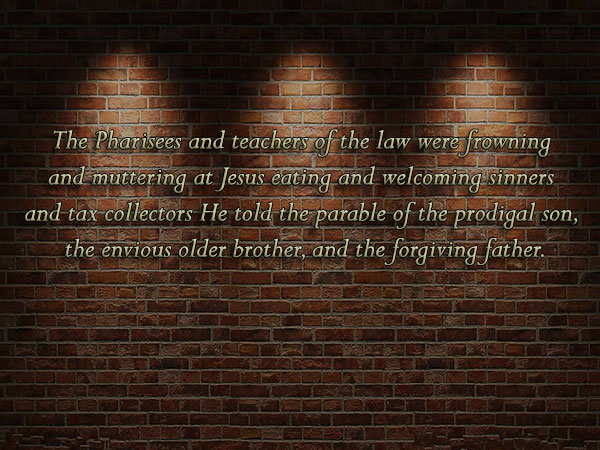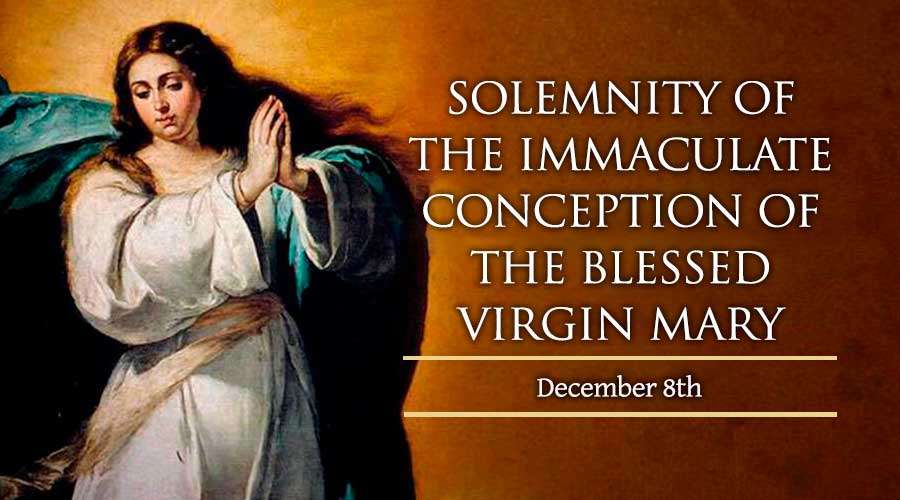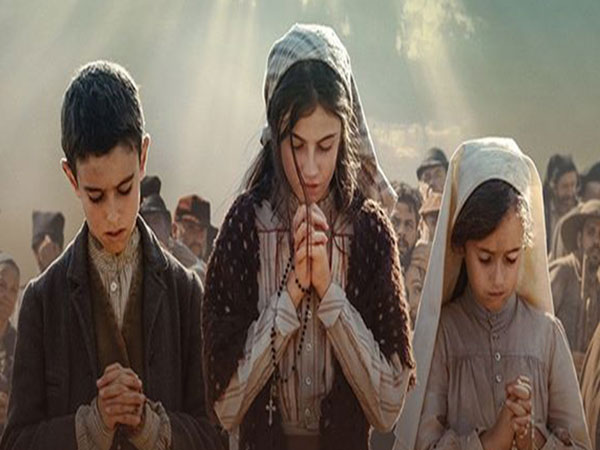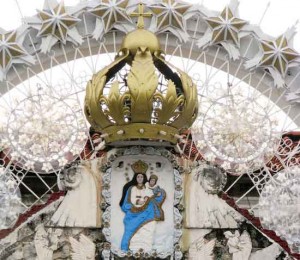
Of the many inimitable lures and fascinating charms of Zamboanga “La Bella,” the City of Flowers, none can be compared to the miraculous Virgin of Pilar in the historic Fort.
So great is the fame of devotion to the Our Lady of the Fort that the annual celebration of her feast on October 12 has greatly outstripped the City’s official feast day. This has made the Virgin of Pilar the actual patroness of La Bella, instead of the Immaculate Conception whose feast is celebrated on December 8.
The embattled Spaniards built the Fort in 1635 as a secure bastion against the constant threats of fierce marauding warriors who were driven by a deep-seated hatred for the white invaders and colonizers.
Rebuilt in 1719, the Fort has lived up to its reputation as it has successfully thwarted all attacks of pirates down through the centuries.
The image of our Lady was brought to Zamboanga in 1734 from Zaragoza, Spain, where she is its patroness. Originally intended as a mere frontpiece atop the main entrance, the image was enthroned on the eastern side of the Fort on January 1734. At that time the Fort was still known as the Real Fuerza de San Jose.
After its reconstruction, the Fort was renamed the Real Fuerza de Nuestra Señora del Pilar de Zamboanga. It carried that name until 1899 when after its occupation by the Americans, it was simply named Fort Pilar and thus has remained until now. Sometime before 1860 the side of the Fort where the statue was located was converted into a permanent shrine. For this reason the main entrance was sealed.
Our Lady of Pilar Zamboanga was named after Our Lady of Pilar of Zaragosa. This came about as a result of a decision made by the Spanish “Cortes” (parliament) to choose the Virgin of Pilar as the patroness of the entire kingdom and its possessions overseas in 1678.
There is a beautiful tradition going back to the first century of Christianity that stands as a source of the devotion to Our Lady of Pilar of Zaragoza. It tells about the apostle James the Elder, one of Jesus’ selected Twelve who went to Spain to spread the good news after the Resurrection of our Lord. One day he was praying on the bank of Ebro river rather depressed at the scarce success of his missionary activity among the people of Spain. To his great surprise and wonderment, he saw the angels transporting the Virgin from Palestine and reverently placing her on a Pillar. Upon looking up, he saw Mary, the Mother of Jesus, in mortal flesh standing on that Pillar. Hence, the name Our Lady of Pilar (Nuestra Señora del Pilar). Mary comforted and encouraged James the Elder to continue his work of evangelization and requested that a church be built in her honor in that very place. Today there stands a magnificent church, built to her memory and in fulfillment of her request, at the very site of her personal appearance in Zaragoza.
This legend has a very important lesson to teach us, which is the irreplaceable role of Mary as mother of God and as our mother in the formation of any Christian community. St. Luke attests to this at the beginning of the Acts of the Apostles. No wonder then that it was the Virgin of Pilar of Zamboanga that stood there at the Fort at the birth of the first Christian community of Zamboangueños. She was calling and bringing them to her son Jesus, as she is still doing now.
Our Lady of Pilar of Zamboanga has her own beautiful legend which has been told and retold over the centuries.
One rainy morning on December 6, 1734, just after midnight, a soldier on sentinel duty along the Fort’s wall, saw a lady in white with a child in her arms walking along the ramparts of the Fort. Around that time, an image of the Virgin of Pilar made for a church in Dipolog disappeared. Loyal to his duty, the sentinel challenged the apparition. But the Lady simply stood in silence without replying. The angry guard threatened to shoot the Lady if she would not identify herself. The woman in white turned around to face the guard and in a whisper, gently asked: “Sentinel, do you not know Mary?” The dumbfounded sentinel fell on his knees and suddenly recognized the Lady as the Virgin Mary. He begged for forgiveness. As dawn drew near, a comrade, who was to relieve the sentinel at the post, found him still on his knees with his eyes focused on the high wall where the mysterious lady appeared. After relating the incident of the apparition, the soldier collapsed.
Since then the presence of Our Lady of Pilar at her shrine in the Fort has been watching over the City in a very special way. She is the same Mary standing in mid-air over the Basilan Strait on September 21, 1897 as seen by many. According to those who saw the apparition she had her right hand raised to signal the on rushing waves to stop and thus saving the city from a tsunami. Again the legend goes, she appeared at midnight on August 16, 1976, when a killer quake and a tsunami threatened the City.
THE SHRINE
The shrine of Our Lady of the Fort is unique in many aspects. To start with, it is an open-air shrine, without doors, right in the middle of the City. It is like a permanent invitation for all the Zamboangueños to come at any time of the day or night.
At sunset, when all the churches and chapels of the City are closed, many Zamboangueños from all walks of life are always seen at the Fort to pay a short visit to our Lady, to pray, to light a candle, to pour out to her the daily joys and pains of their life. There is probably not one single day or night of the year when Fort Pilar is found deserted.
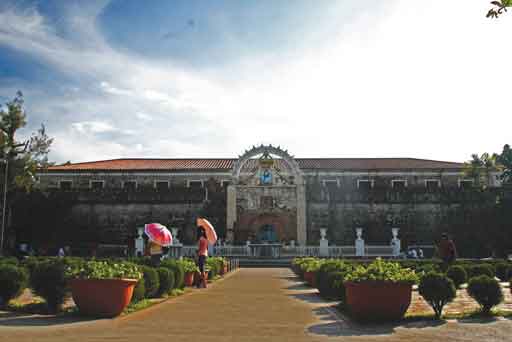
The shrine has been carved into the wall of a “fortress,” a contradictory symbol in itself. A fortress normally evokes memories of invasions, wars, hatred, divisions. It was so with Fort Pilar. The history of Southern Philippines and of Zamboanga in particular, has been a rather violent one and in some ways, still is. So much blood was spilled out in the very wall where our Lady stands now as the patron saint of Zamboanga. Undoubtedly, in the minds of the rude Spanish soldiers that guarded the garrison of the Fort in the past, the Virgin of Pilar was “on their side,” as a shield against “the enemies.” But the Virgin of Pilar, patiently changed it all. With the passage of time, she has transformed her “Fort” from a bastion of war into a symbol of peace, reconciliation and dialogue. It is the greatest miracle performed by Our Lady of Pilar in this city. The very location of the Fort speaks for itself. It stands at the frontier of Muslim and Christian communities. In a sense, she belongs to both communities, for she is respected by all and praised in the sacred books of both great religions, the Koran and the Bible.
At a time where dialogue between the different religions of the earth is of paramount importance for peace, the Shrine of Fort Pilar is a place where religious dialogue between Muslims and Christians becomes a daily routine, a fact of everyday life.



